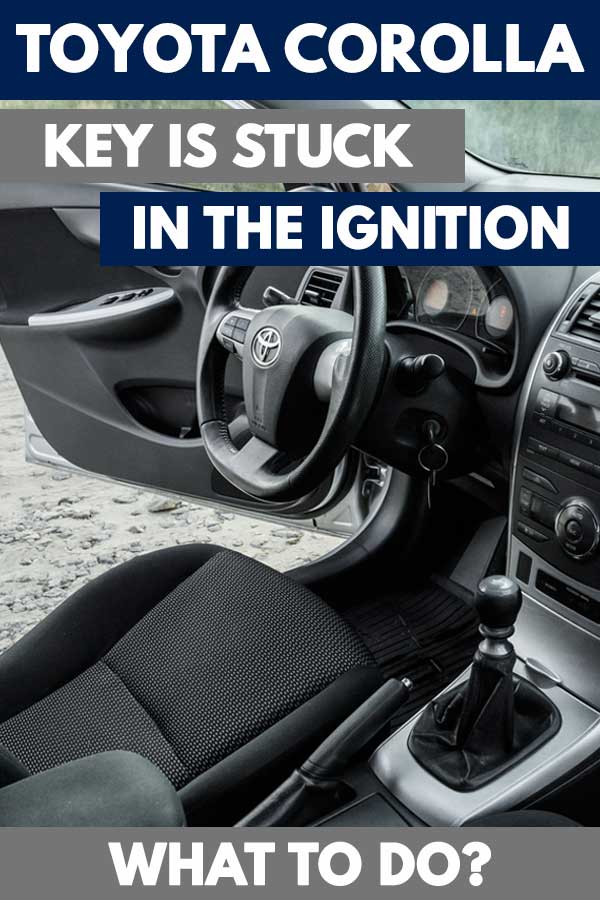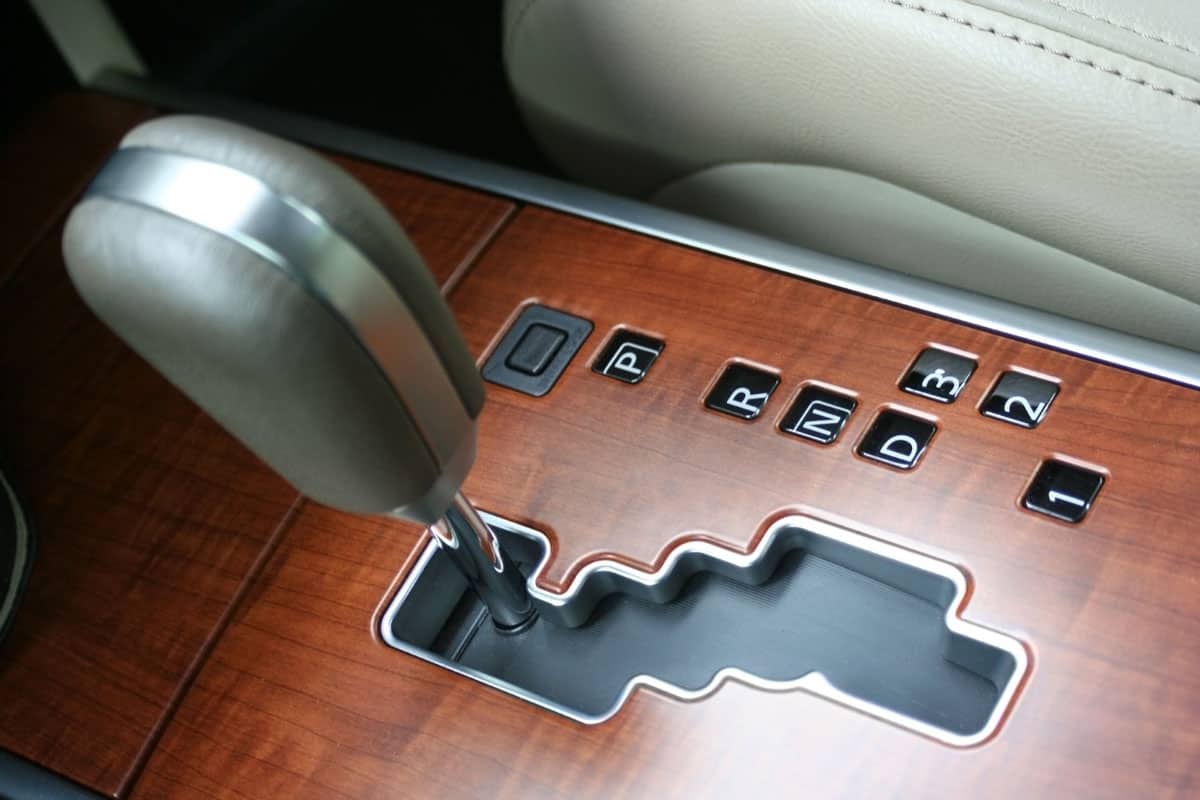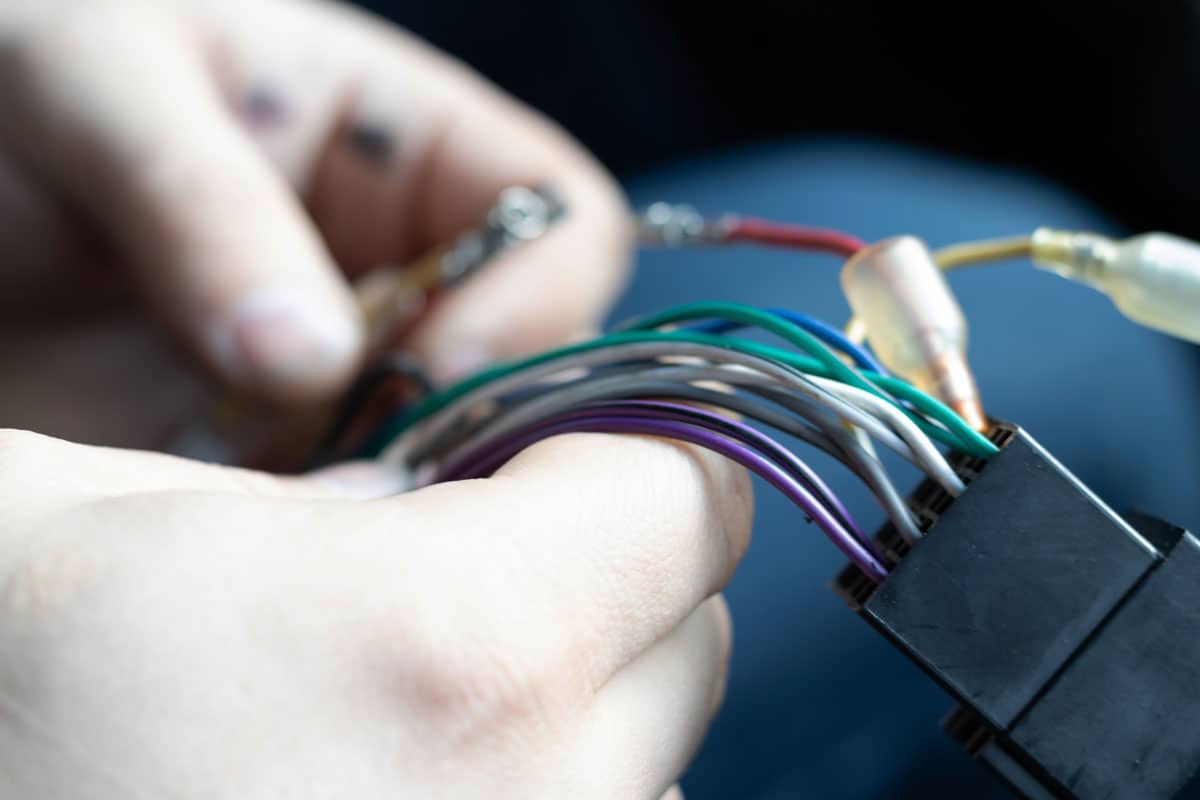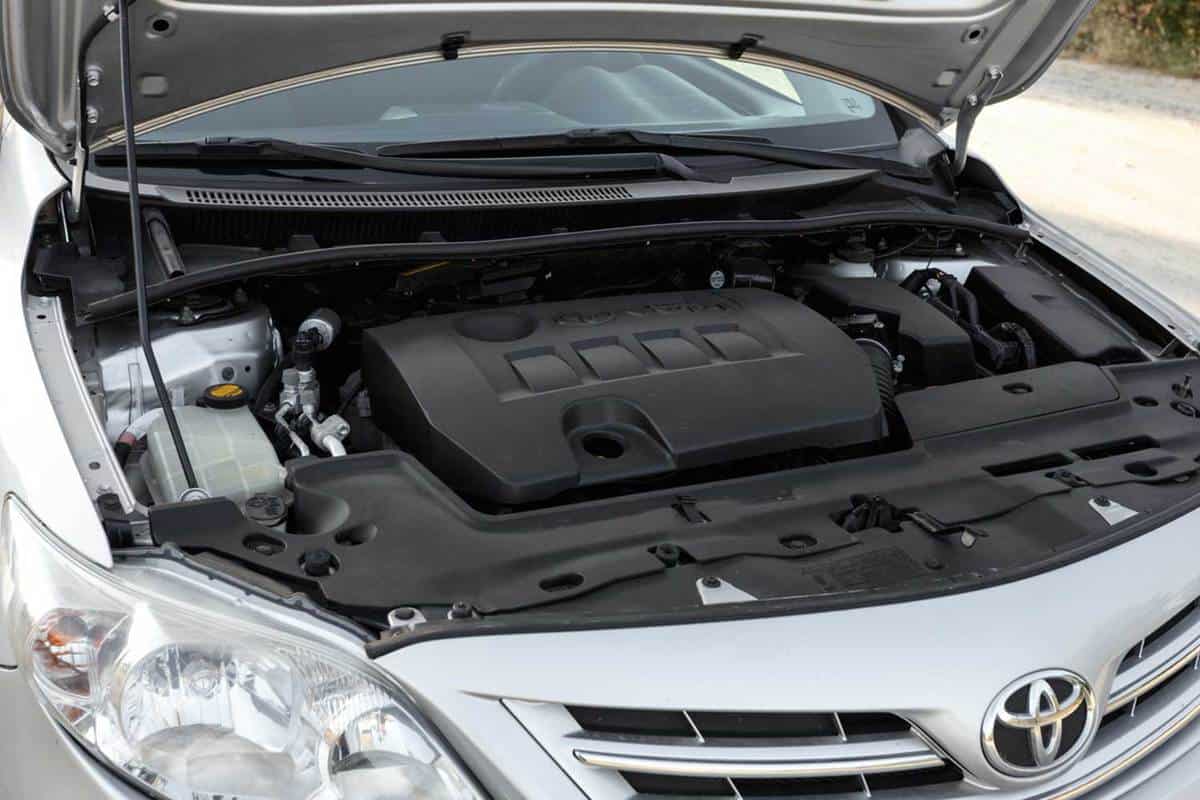Your Toyota Corolla usually runs like a dream, until the day you put the key in the ignition, and it gets stuck in there. You wriggle and jimmy the key, but it just won’t budge. Obviously, you can’t leave your car like this, but you’re also not sure what to do in such a situation. How do you get the key out of the ignition?
While it can vary from model to model, to free your key from your Toyota Corolla’s ignition, we recommend you do the following:
- Check that you’re in parking mode.
- Ensure nothing is jamming your locking steering column.
- Turn off the solenoid’s power supply to see if the key comes out.
- Make sure your car battery hasn’t died.
- Test the lock mechanism and the ignition lock cylinder.
- Call a tow.
- Take your car to a mechanic.

In this article, we will elaborate more on each of the above steps, explaining them in detail. It’s scary when your car key doesn’t want to come out, but it’s also completely solvable. We recommend you keep reading to get to the bottom of this issue!
What to Do When Your Toyota Corolla Key Gets Stuck in the Ignition

Make Sure You’re in Park (parking mode)
It may sound very, very common sense and thus pretty silly, but are you sure you’re in park? If you are, then your automatic transmission likely won’t allow the key to pop out unless you shift the vehicle to park mode. This is due to a safety feature called the shift interlock.

Wriggle Your Steering Wheel to Get the Locking Steering Column to Release the Key
The locking steering column is a feature found in most vehicles. It will lock up once you remove the key from the ignition. That’s meant to ward off car thieves. If your locking steering column happens to malfunction, then the ignition switch receives undue pressure that keeps your key stuck in your Corolla.
By rotating the steering wheel while your car is in parking mode, it’s possible for you to retrieve your key.

Disconnect the Power to the Solenoid
If none of the above has worked so far, don’t be distressed. Corolla owner Sam Carmel says in a ">YouTube video that Corolla models include a starter solenoid that could be the key (no pun intended) to solving your issues. This solenoid acts as an electromagnet, triggering the vehicle’s starter motor. The starter solenoid has two long wires that attach to the starter motor.
You’re going to want to power off the solenoid by disconnecting the wires. You can find the solenoid behind the steering wheel in the 2010 Corolla at least, which is what Carmel worked on for his video. He says tinkering with the solenoid is safe. The key should hopefully come out from there.

Test Your Car Battery Life
If your Corolla has an entirely electronic system, including the ignition, then with no juice, it can’t work. That often means your key can get seized if your car battery happens to die. You can tell if it’s a battery issue in two obvious ways. First, are you seeing any interior lights? Also, can you start the car?
If you answered no to both those questions, then your battery has probably died. You’ll need to get a jump if you’re not at home. Make sure you monitor your car battery in the future so you don’t find yourself in another inopportune situation.

Confirm Your Ignition Lock Cylinder Is Properly Working
Lots of vehicles include what’s known as an ignition lock cylinder. This has pins upon pins organized in a row. Each of these pins has a spring that can release to hold the key in place when you put it in the ignition.
Like all parts of a car, these pins are far from perfect. Should misalignment occur or should any of the pin springs get lodged and unable to retract, your key won’t come out of the ignition. With a mini hammer, smack on your ignition lock cylinder, but do so super gingerly. You don’t want to break it, after all. Hopefully, a few good whacks will get everything working. If not, then it’s probably time for a new ignition lock cylinder.
Make sure the ignition lock mechanism stays clean as well. Gunk and debris can prevent you from getting your key in or out smoothly.
Call a Tow/See a Mechanic
If worst comes to worst, you may need to call a tow truck and get your vehicle towed and yourself back home (or work or wherever you were going). That’s if you tried all the above solutions and none made a difference. The problem probably runs deeper than what you yourself can fix. Let a mechanic take care of it.
Can You Use WD-40 to Get the Key Out?
WD-40 is a common lubricant that people use for creaky doors, stuck keys on a computer keyboard, and more. That has you wondering if your key happens to get lodged inside your Toyota Corolla, could you rely on this lubricant for pulling the key out?
Using WD-40 on your ignition switch doesn’t come highly recommended. Yes, it will indeed work in the short term. However, in the long term, the lubricant can dry up and become sticky and gummy. Your key will once again get stuck. By applying more WD-40, you’re just continuing a perpetuating cycle. Eventually, you won’t be able to use the ignition switch at all because it’ll be so sticky.
You’re much better off with a product actually made for vehicles. We like the AGS powdered graphite lubricant, which is available on Amazon.
Can Your Stuck Key Damage the Corolla’s Ignition?
If you pull and wrestle with your stuck car key too much, is it possible to ruin your vehicle’s ignition without intending to? As we’ve shown so far in this article, the answer is yes. You can gunk up the ignition with too much WD-40 or other lubricants not formulated for vehicular use. If you tug on your key too hard as you attempt to get it out, you could damage the springs inside the ignition lock cylinder as well.
It’s much better to follow the above steps and try all those rather than force the key when it’s just not coming out. The steps we recommended will not damage the parts of your Corolla if you’re smart and careful.
Can Car Keys Wear Out?
Another issue that can cause your key to getting stuck in your Corolla’s ignition that we wanted to save for a separate section is the key itself. Yes, that’s right, your key. How long have you had that key? If it’s been more than a few years, then it could be the very hunk of metal you’re fighting with is the culprit.
The more you put your key in the ignition, drive, and then take it out, the more the grooves and lines etched into the key begin to fade. If you ever use your key for any other purposes than starting your car, such as opening mail, you could again wear down the grooves.
You may also find that the years have bent the key a bit. Okay, you did that, but often without realizing it. These wear issues contribute to how likely the key is to come out of the ignition each time you start your Corolla.
This is where you want to use your graphite spray, applying it carefully in the gap between the lock and the key. Then, retire that key. If you have a backup ignition key, then switch to that one. You may also want to get a spare key made if you haven’t already while your backup key is still in fresh, usable condition.
Conclusion

If your Toyota Corolla key has gotten stuck in the ignition, there’s a slew of reasons this could have happened. Your car battery may have died or you might not have the car fully in park. Those are the easy solutions. It could also be an electrical issue, your ignition lock cylinder is in poor shape, or the key is very worn down from years of use.
By trying the troubleshooting solutions in this article, you should be able to figure out how to free your stuck Corolla key. If not, then get in touch with a mechanic to get to the bottom of the issue. Good luck!

